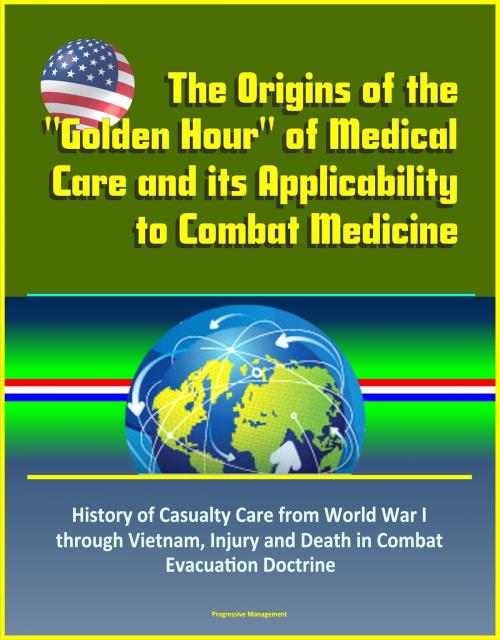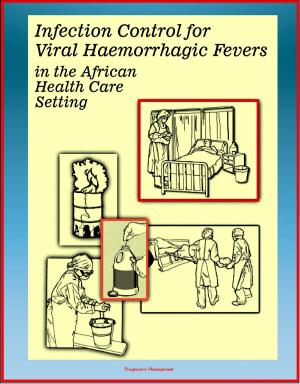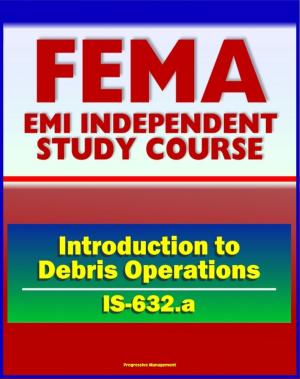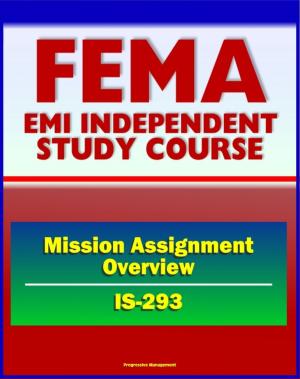The Origins of the "Golden Hour" of Medical Care and its Applicability to Combat Medicine: History of Casualty Care from World War I through Vietnam, Injury and Death in Combat, Evacuation Doctrine
Nonfiction, Health & Well Being, Medical, Allied Health Services, Emergency Medical Services, History, Military, United States| Author: | Progressive Management | ISBN: | 9781370718023 |
| Publisher: | Progressive Management | Publication: | April 4, 2017 |
| Imprint: | Smashwords Edition | Language: | English |
| Author: | Progressive Management |
| ISBN: | 9781370718023 |
| Publisher: | Progressive Management |
| Publication: | April 4, 2017 |
| Imprint: | Smashwords Edition |
| Language: | English |
This excellent report has been professionally converted for accurate flowing-text e-book format reproduction. The Golden Hour standard is used in emergency medicine and trauma care and states a person must receive definitive care within one hour to ensure optimal outcomes. The medical community accepted this standard without supporting evidence. It is a cornerstone of modern trauma systems. Secretary of Defense Gates endorsed this standard for military medicine (Gates 2009). His stance, combined with strong opinions from the trauma community, resulted in a requirement for units to operate within one hour of ROLE III care during deployments. A review of the association between evacuation time and outcomes fails to support the Golden Hour. The evidence suggests if combat injury is properly treated in the first several minutes, focusing on hemorrhage, airway management, and treatment of tension pneumothorax, combined with high quality en route care during evacuation, there is significantly more time available to reach ROLE III care before outcomes suffer. Therefore, the Golden Hour is an improper standard for combat medicine resulting in increased resource requirements and unnecessary restrictions on units. A more appropriate approach is enhanced individual soldier training on the management of the major immediate causes of combat death as well as positioning advanced resuscitative care as far forward as possible.
CHAPTER 1 - INTRODUCTION AND OVERVIEW * Primary Research Question * Secondary Research Questions * Assumptions * Definitions * Limitations * Delimitations * Significance of Study * CHAPTER 2 - LITERATURE REVIEW * The Origin of the Golden Hour * World War I Medical Care * World War II Medical Care * Korean War Medical Care * Vietnam War Medical Care * Scientific Evaluation of the Golden Hour since the Vietnam War * Mechanism of Injury and Causes of Death in a Combat Setting * Approaches other than Reducing Evacuation Time for Improving Outcome * Current Doctrine Regarding the Golden Hour * CHAPTER 3 - METHODOLOGY * CHAPTER 4 - ANALYSIS * The Evidence behind the Initial Golden Hour Standard * The Golden Hour in Practice * Doctrine * CHAPTER 5 - CONCLUSIONS AND RECOMMENDATIONS * Doctrine * Organizational * Training * Materiel * Leadership and Education * Personnel and Facilities * Policy
Despite the absence of doctrine and a significant lack of high quality medical research, the "Golden Hour ring" is now a major limiting factor in planning combat operations. This time ring not only restricts operational reach with respect to distance from advanced trauma and initial surgical care, but it also creates a significant vulnerability by providing both a source of information to the enemy as well as a relatively soft target for irregular warfare. Enemy forces can now plan on no major US action outside this one hour ring which significantly shrinks in size when atmospheric conditions prevent rotary wing medical evacuation flight. Additionally, they can anticipate major future action by the relocation of ROLE III medical as well as rotary wing medical evacuation assets. They can correctly assume there will be no major combat action initiated by the United States in an area until these assets are within adequate proximity. Finally, denying access to ROLE III care through irregular warfare measures can severely limit combat operations in an area. These issues raise the question of whether the Golden Hour is the appropriate standard form medical coverage planning. Additionally, it questions what doctrine should be regarding operational reach with respect to medical evacuation assets in an austere or hostile environment.
This excellent report has been professionally converted for accurate flowing-text e-book format reproduction. The Golden Hour standard is used in emergency medicine and trauma care and states a person must receive definitive care within one hour to ensure optimal outcomes. The medical community accepted this standard without supporting evidence. It is a cornerstone of modern trauma systems. Secretary of Defense Gates endorsed this standard for military medicine (Gates 2009). His stance, combined with strong opinions from the trauma community, resulted in a requirement for units to operate within one hour of ROLE III care during deployments. A review of the association between evacuation time and outcomes fails to support the Golden Hour. The evidence suggests if combat injury is properly treated in the first several minutes, focusing on hemorrhage, airway management, and treatment of tension pneumothorax, combined with high quality en route care during evacuation, there is significantly more time available to reach ROLE III care before outcomes suffer. Therefore, the Golden Hour is an improper standard for combat medicine resulting in increased resource requirements and unnecessary restrictions on units. A more appropriate approach is enhanced individual soldier training on the management of the major immediate causes of combat death as well as positioning advanced resuscitative care as far forward as possible.
CHAPTER 1 - INTRODUCTION AND OVERVIEW * Primary Research Question * Secondary Research Questions * Assumptions * Definitions * Limitations * Delimitations * Significance of Study * CHAPTER 2 - LITERATURE REVIEW * The Origin of the Golden Hour * World War I Medical Care * World War II Medical Care * Korean War Medical Care * Vietnam War Medical Care * Scientific Evaluation of the Golden Hour since the Vietnam War * Mechanism of Injury and Causes of Death in a Combat Setting * Approaches other than Reducing Evacuation Time for Improving Outcome * Current Doctrine Regarding the Golden Hour * CHAPTER 3 - METHODOLOGY * CHAPTER 4 - ANALYSIS * The Evidence behind the Initial Golden Hour Standard * The Golden Hour in Practice * Doctrine * CHAPTER 5 - CONCLUSIONS AND RECOMMENDATIONS * Doctrine * Organizational * Training * Materiel * Leadership and Education * Personnel and Facilities * Policy
Despite the absence of doctrine and a significant lack of high quality medical research, the "Golden Hour ring" is now a major limiting factor in planning combat operations. This time ring not only restricts operational reach with respect to distance from advanced trauma and initial surgical care, but it also creates a significant vulnerability by providing both a source of information to the enemy as well as a relatively soft target for irregular warfare. Enemy forces can now plan on no major US action outside this one hour ring which significantly shrinks in size when atmospheric conditions prevent rotary wing medical evacuation flight. Additionally, they can anticipate major future action by the relocation of ROLE III medical as well as rotary wing medical evacuation assets. They can correctly assume there will be no major combat action initiated by the United States in an area until these assets are within adequate proximity. Finally, denying access to ROLE III care through irregular warfare measures can severely limit combat operations in an area. These issues raise the question of whether the Golden Hour is the appropriate standard form medical coverage planning. Additionally, it questions what doctrine should be regarding operational reach with respect to medical evacuation assets in an austere or hostile environment.















